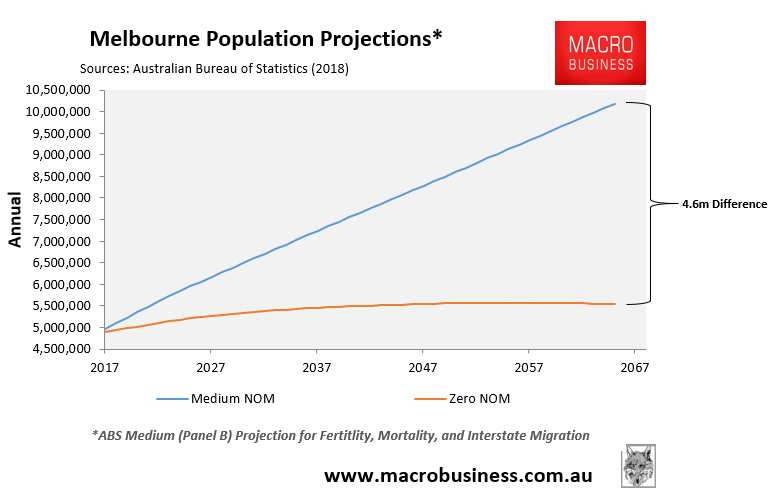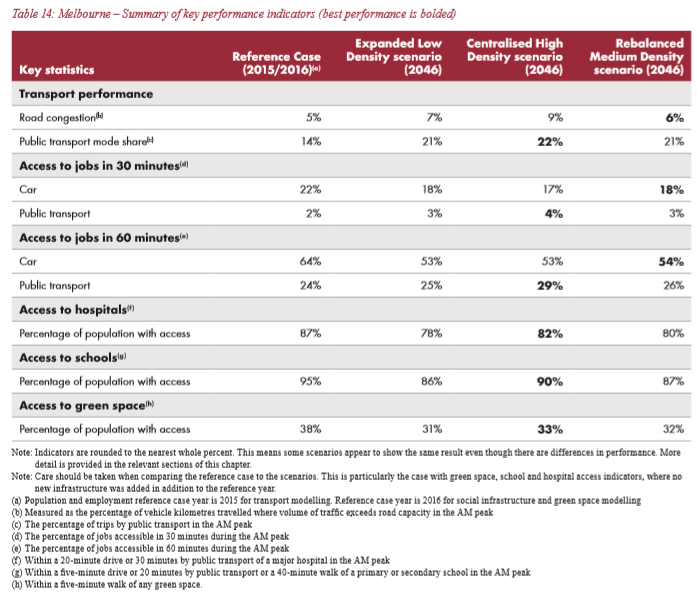Political commentator, George Megalogenis, penned a long-winded article in The Age’s Good Weekend hailing the rise of Melbourne to Australia’s largest city, and how this will make it the cultural, political and economic capital of Australia:
The rise of Melbourne is shaping up to be the social and economic story of the 21st century, tilting the population south for the first time since the full employment era of the 1960s, when Victoria last dominated the nation’s political life under the government of Robert Menzies. If the trend holds, and the electoral pendulum follows the population, it will force us to change the way we think of ourselves as Australians.
Greater Melbourne grew by one million people between 2008 and 2018, pushing its total population past 5 million as the nation’s crossed 25 million. Sydney added just over 800,000 people over the same period to reach a population of 5.2 million, while Brisbane’s population increased by 450,000 to 2.5 million.
Those raw numbers actually understate the shift. Melbourne is growing at a faster rate than any capital or regional city in the country…
Melbourne’s population is arguably already larger than Sydney’s, depending on where the boundaries are set. The Australian Bureau of Statistics includes the Central Coast in its definition of Greater Sydney, but leaves Geelong out of its definition of Greater Melbourne. Remove the Central Coast and Melbourne had 75,000 more people than Sydney, according to the latest data for 2018.
Jobs, education, lifestyle and, most importantly, an international reputation as a welcoming city for migrants are Melbourne’s drawcards at the moment…
Melbourne is the first Australian city in which the largest ethnic community are migrants born in India, followed by those born in China…
But Melbourne’s ethnic face, with the Indians first, the Chinese second and the English third, is expected to become the nation’s before the end of the 2020s, as cities and regions increasingly rely on migration for population growth…
As Melbourne passes Queensland, and then Sydney, and as the Indians and Chinese rise to first and second place among the migrant communities, history will be made at the core of our identity. Indigenous Australians will outnumber the English-born for the first time since the 1820s. At that point we can stop pretending we are just a white nation.
In the circa 5,000 word article, George Megalogenis doesn’t once mention any downsides from Melbourne’s hyper-growth. Rather, it is presented as being unambiguously positive.
This is strange given in May 2017, Megalogenis warned that the immigration tidal wave flooding into Melbourne and Sydney is “potentially catastrophic” and called for a concerted policy of decentralisation:
“If most of the population growth that’s already in train for the next 10, 20, 30 years ends up in Sydney and Melbourne, we’ve got a problem. But if we are able to pull-off decentralisation – something we’ve been talking about for more than 100 years as a nation… – we may be able to fit the next 10 or 20 million people a lot easier than otherwise would be the case”…
“You look at Sydney’s topography and it can’t fit another million people easily. And you look at Melbourne’s, and it will fit in another million but at the expense of livability because they just keep pushing the boundary out. That next million, that next two million, that each city knows is in train could be divided quite neatly across not just the Eastern Seaboard but inland…”
“The default setting to me could potentially be catastrophic for the country over the next 20 years if people just end up in Melbourne and Sydney”.
As we know, Melbourne’s population is officially projected by the ABS to more than double to 10.2 million people over the next half a century:

Given it took Melbourne around 170 years to reach a population of 3.3 million people in 2001, tripling that number to more than 10 million people in only 65 years (i.e. by 2066) is sheer madness and explains why quality of life is being obliterated under the mass immigration ‘Big Australia’ policy.
Remember, Infrastructure Australia’s own projections are for all indicators of liveability in Melbourne to deteriorate as its population swells to a projected 7.3 million by 2046 (let alone to 10.2 million by 2066):

If George Megalogenis was intellectually honest, he would have mentioned these costs in his 5,000 word puff piece hailing Melbourne’s cancerous growth.

